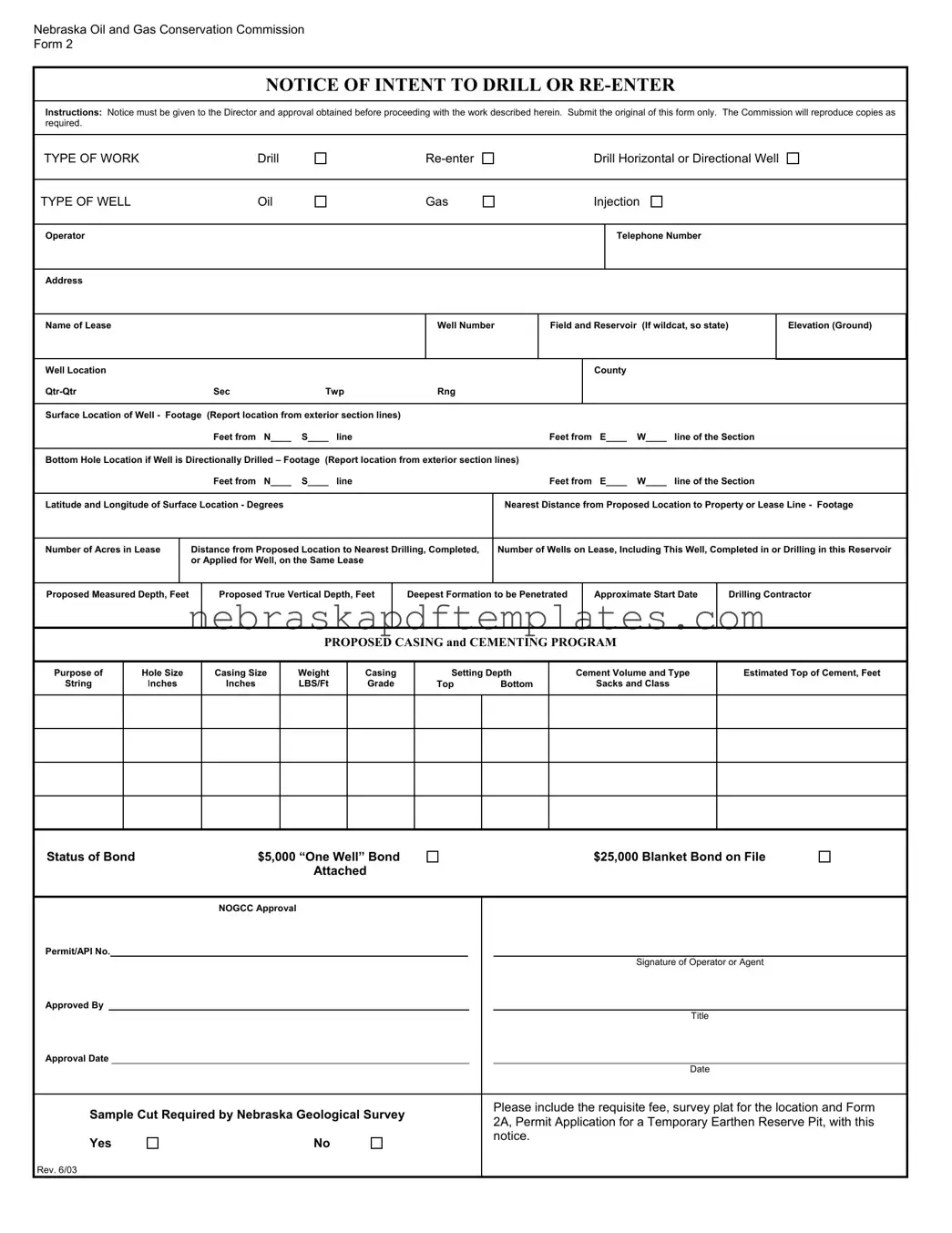Blank Nebraska 2 PDF Template
The Nebraska 2 form is a critical document used by operators to notify the Nebraska Oil and Gas Conservation Commission of their intent to drill or re-enter a well. This form must be submitted for approval before any drilling activities can commence, ensuring compliance with state regulations. Timely submission of the Nebraska 2 form is essential for a smooth drilling process, so take action now by filling out the form below.
Access Editor Here
